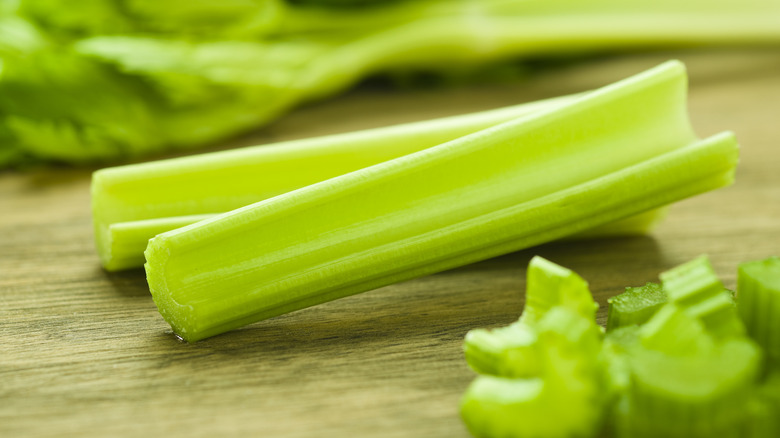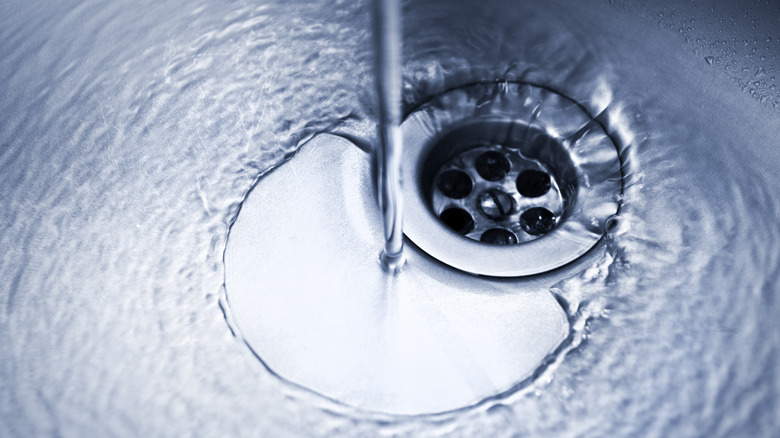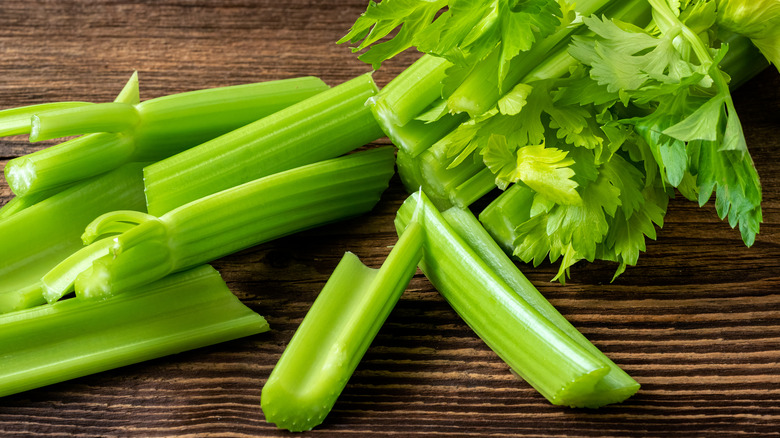Why You Should Never Put Celery Down The Garbage Disposal
When you need to eliminate a sinkful of mushy food, gunk, and grime, there's no appliance as handy as the garbage disposal. However, the garbage disposal isn't necessarily the all-powerful contraption we tend to think it is. In fact, sending anything other than soft, chopped up food down the sink can cause serious damage. A garbage disposal's rapidly turning tines can make short work on a variety of foods, but there is a risk that doing so can cause the machine to need to be replaced. There are a number of items that should never be put down the garbage disposal, but one food that should absolutely not come into contact with this device is celery.
The combination of celery's long, stringy fibers and a garbage disposal's thin whirling prongs is a recipe for disaster. The celery can easily get tangled around the various mechanical components of the garbage disposal, causing it to break. Considering that replacing a garbage disposal can cost anywhere from about $200 to over $1,000 dollars, this is definitely a scenario one would want to avoid if possible.
Celery, and other fibrous foods, can cause clogs
The mass of mushed up celery strands can also create a clog in your sink. As the clog sits around, it collects grease, dirt, and other food particles. As the food rots, it emits a foul odor from your drain until you can get the clog removed, either with a lot of elbow grease or by spending money to hire a plumber. Other fibrous foods can cause a similar problem, so things like banana peels, corn husks, and asparagus should stay away from the garbage disposal. Dropping a few small celery pieces down your drain isn't going to instantly destroy your appliance, but try to do so as sparingly as you can.
Along with celery and other stringy foods, there are several other vegetable bits that should not be thrown in the garbage disposal. Onion skin can also get tangled around the garbage disposal and cause it to break, but it can also bypass the disposal entirely and get lodged in the sink's drain. Similarly, thin potato peels may dodge the spinning tines of the garbage disposal and get stuck in the pipe and form a clog. Or, if they are pulverized by the disposal, they can form a sticky paste that blocks the drain.
What to do with excess celery
If you find yourself with a lot of extra celery, putting it down the garbage disposal can be a huge mistake. Luckily, there are plenty of other ways you can make the most of your excess veggies. You can store chopped up celery in the freezer for half a year by blanching and draining it first. Celery is a great ingredient to have around if you need to bulk up stocks or soups, and you can also sauté it in butter along with other aromatics to create a delicious base for other dishes. If your celery is truly past its prime, you can always toss it in the compost heap to turn it into plant food. Before you do, make sure to rinse off any dressing or oil so it doesn't draw pests into your home.
Garbage disposals are powerful tools, but their actual components are quite sensitive, and need to be used properly to avoid costly repairs. Celery and other stringy vegetables can cause real damage to your appliance, so be mindful when disposing of them to keep your sink in working order.


